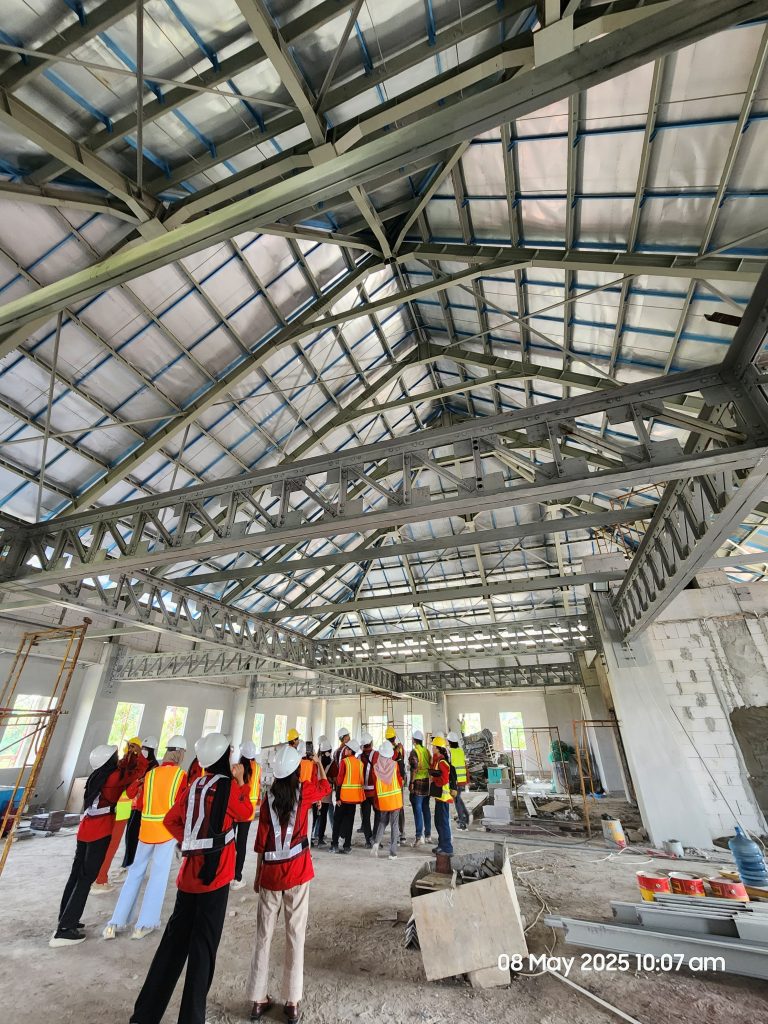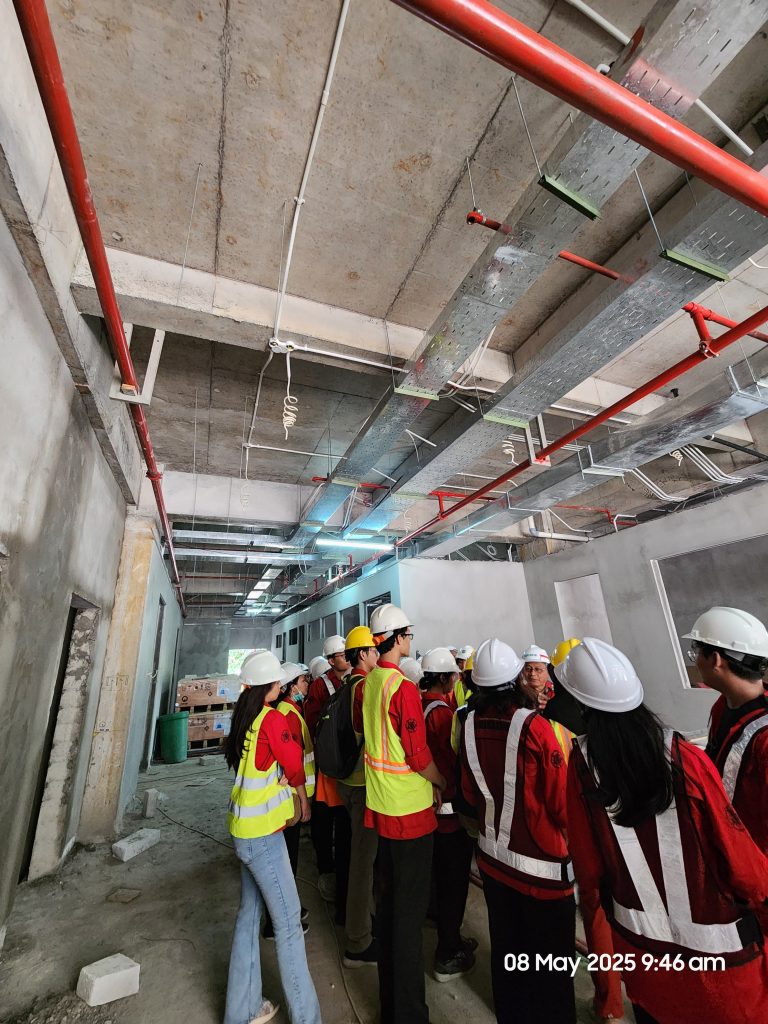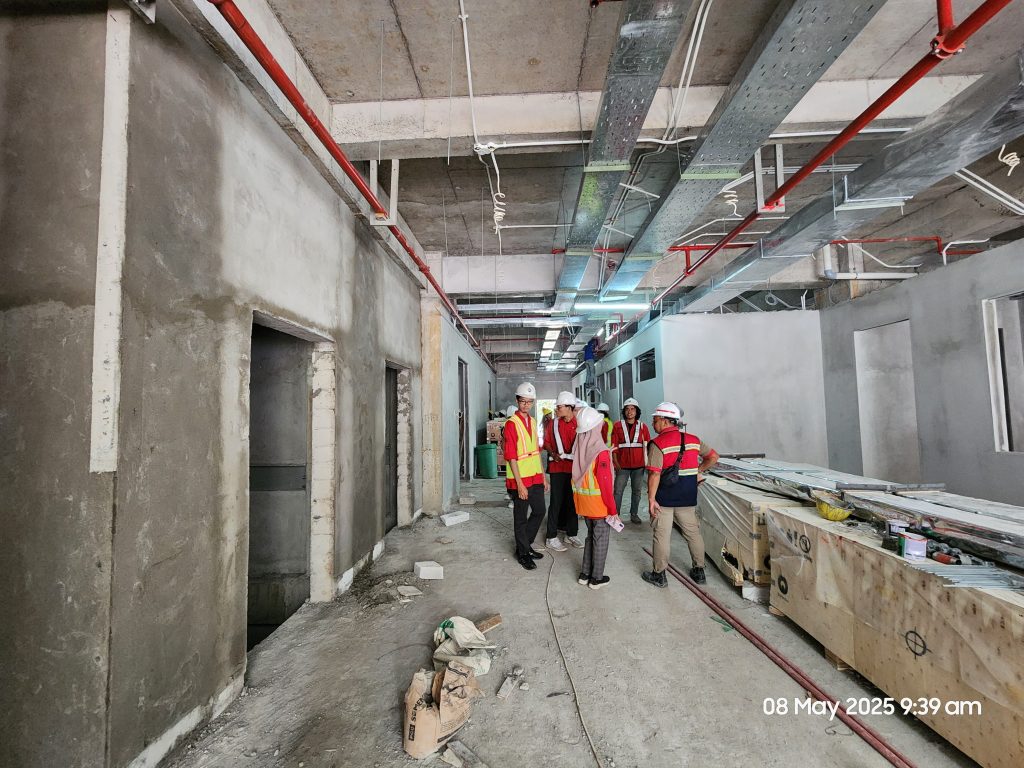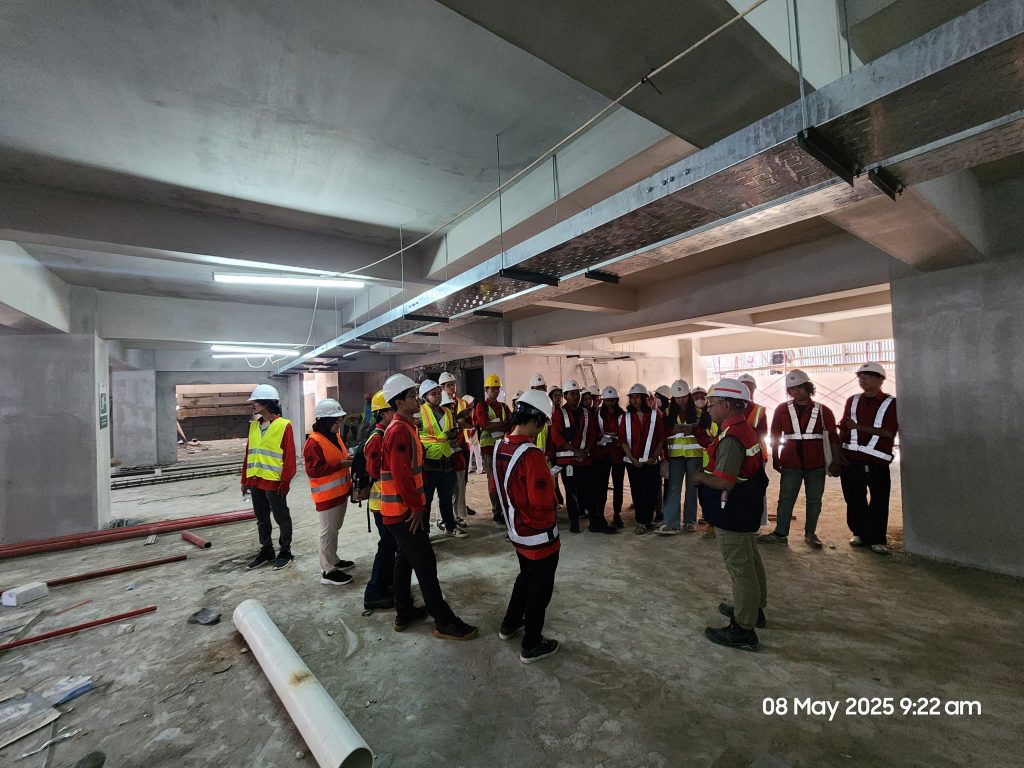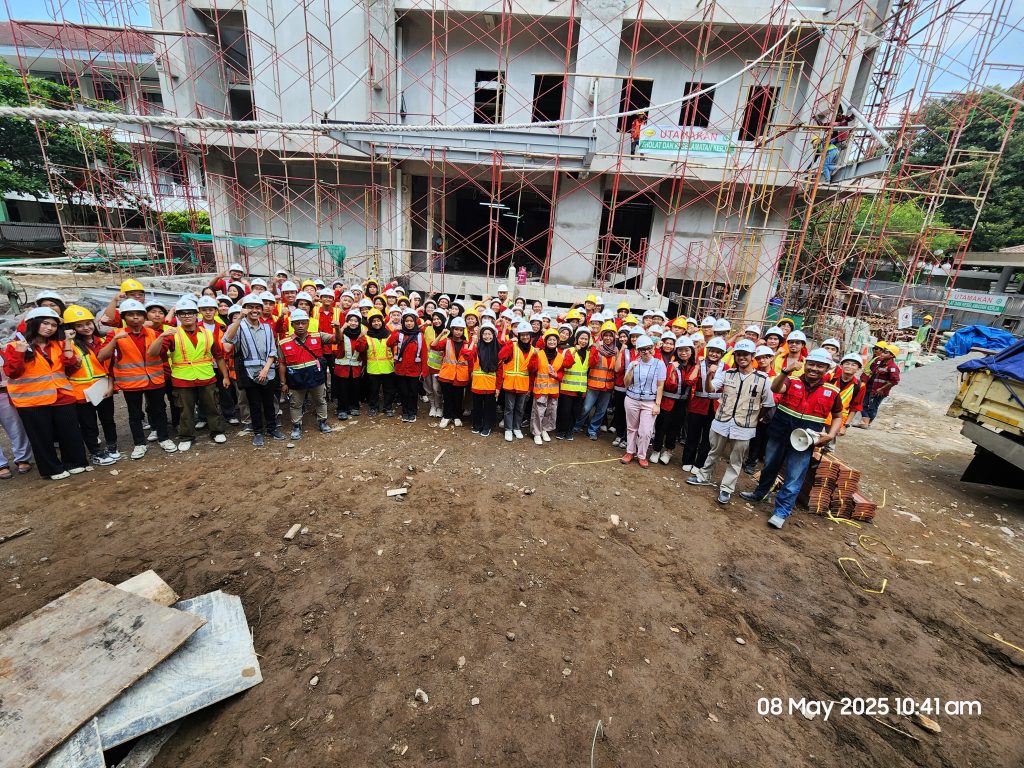Sleman, May 8, 2025 — Second-semester students of the Architecture Study Program at Universitas Gadjah Mada (UGM), class of 2024, participated in a field trip as part of the Building Systems and Construction (SBK) course. The visit took place at the construction site of a new building for the Faculty of Agricultural Technology (FTP) UGM. This activity serves as an integral part of the learning process, aiming to introduce students to the technical and systematic realities of building construction.
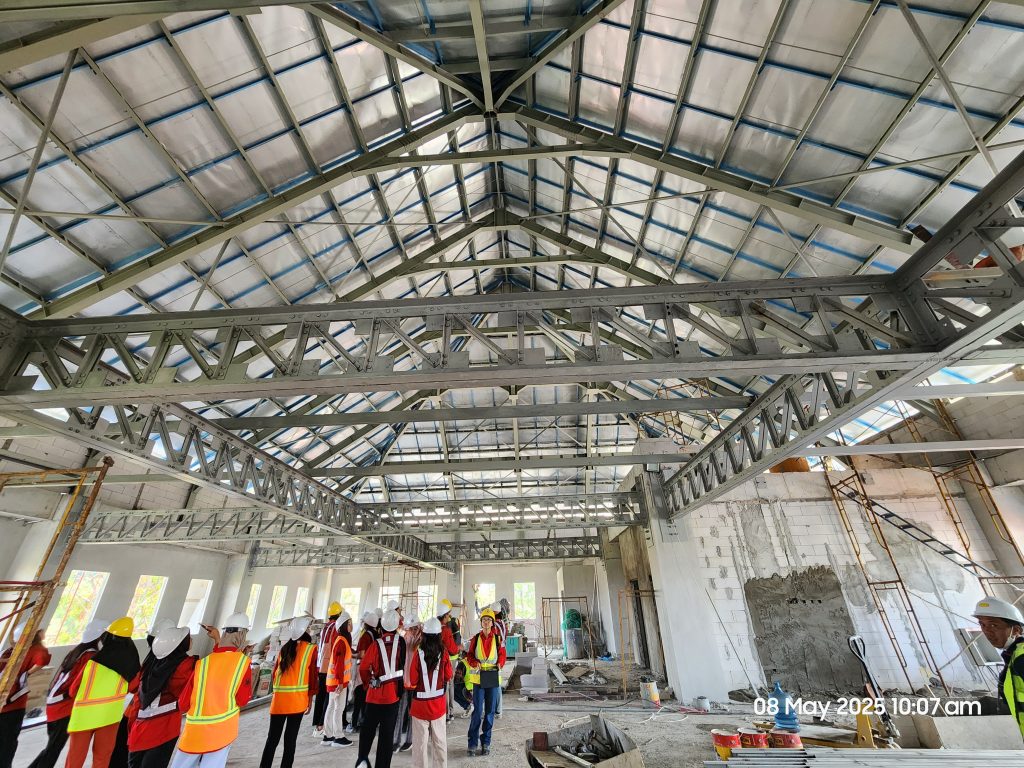
The one-day visit was guided by the course lecturers, Dr. Yani Rahmawati, S.T., M.T. and Wisnu Agung Hardiansyah, S.Ars., M.Arch., and supported by a team of teaching assistants. The project under observation is a five-story building currently in the final stages of construction, including the installation of utility systems, interior finishing, and roof structure completion. The SBK course primarily aims to expose students to structural systems, utilities, and construction methods within architecture. During the visit, students had the opportunity to witness firsthand various building system components that are typically studied only through technical drawings and classroom theory.
“Through this field trip, students don’t just imagine how pipes and cables are installed they actually see their placement on-site and understand the routing of water systems, electrical wiring, and ducting systems,” Dr. Yani Rahmawati
The activity began at 9:00 AM with an introduction from the project’s contractor, who provided an overview of the current construction stage and key systems being installed. Following the briefing, students were divided into small groups according to their SBK studio divisions, then guided to explore the project site in rotation. The tour began in the basement area, where students could directly observe the positioning of the Ground Water Tank (GWT), water pumps, and piping for fire suppression and clean water systems. They also learned how NFPA standards regulate the layout and connections between the GWT and pumps, which must be aligned without turns to ensure efficiency and safety.
The observation continued from floors 1 through 5, where students examined various system components such as electrical installations using high-impact conduit pipes, neatly installed cable routes marked with colored clips to indicate their function, and combined utility shafts for electrical and plumbing systems separated by specific barriers for safety. On the top floor, students learned about roof framing and catwalk systems, which serve as maintenance pathways above the ceiling an often-overlooked yet crucial element for long-term building management.
One of the most valuable aspects of this field trip was the chance to observe construction elements still exposed before the finishing stage. Students could see the raw layout of AC ducting, cable arrangements, piping networks, and the installation methods for door frames and partitions.
Several technical points were explained in detail by the site team, including:
- Differences between single-chamber and double-chamber water tanks
- Installation of movable partitions with acoustic insulation using rockwool up to 80 dB
- Techniques for anchoring steel door frames using C-profiles filled with wood for stronger adhesion to the main structure
- Material selection strategies, such as the use of instant skim coat for frame finishing and high-quality cement for reinforcing wall openings
This hands-on knowledge not only enriches students’ technical understanding but also helps shape a more structurally and functionally responsible design mindset.
The presence of lecturers and assistants during the visit encouraged active discussions between students and instructors. Students were free to ask questions and engage in real-time dialogue about the construction systems they observed. This created a dynamic and highly applicable learning environment.
“Many of the things we saw here are hidden in a completed building. We learned how systems are arranged behind walls, above ceilings, or inside shafts. It was truly eye-opening,” said one of the student participants
This field trip plays a crucial role in developing students’ understanding of the non-visual aspects of architecture. In real-world practice, architectural design isn’t only about aesthetics it’s also about how a building can function effectively through well-planned structural and utility systems. Through this experience, students are encouraged to realize the importance of integrating design with technical systems, and how architectural decisions must consider construction aspects right from the initial design phase. As a follow-up, students are expected to reflect on their observations and incorporate the insights into their upcoming studio projects, which will focus on designing multi-story buildings.
